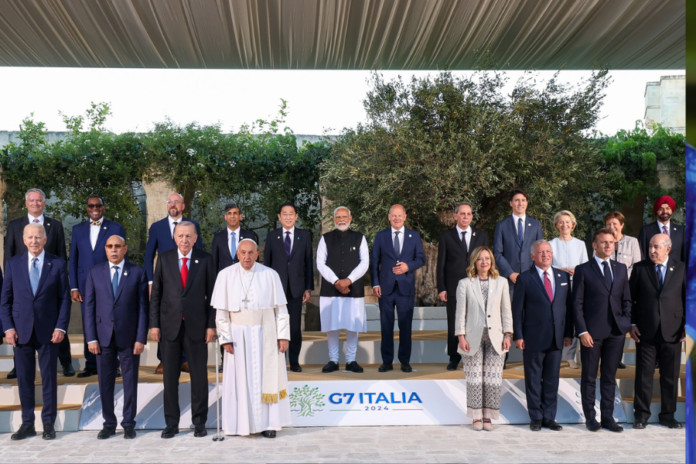From his first term in 2014 to his current third term in 2024, the foreign policy measures taken by Prime Minister Narendra Modi have continuously highlighted India’s aggressiveness and strategic clarity. India has taken strong measures during this time to oppose China and protect its interests, such as the 2019 Balakot Airstrike and the TikTok ban.
China and Pakistan, two neighboring states, have expressed disapproval of these measures, especially in light of events like the 2020 Galwan clash that claimed the lives of Indian soldiers and led to increased border security and a large rise in the defense budget, which is currently at Rs 6,21,540 crores from Rs 4,73,378 crores in 2020.
The increase in defense budget demonstrates India’s steadfast dedication to both security and national development. The goal of achieving ‘Vikasit Bharat 2047′ (Developed India) and becoming India the world’s third-largest economy is the foundation of Modi’s government. India’s economy has grown from being the tenth to the fifth largest since 2014, indicating room for more expansion.
Prioritizing the growth of manufacturing industries is a key component of the Vikasit Bharat strategy, as demonstrated by the considerable subsidies of $28 billion distributed among 14 sectors and an additional $10 billion for the semiconductor industry. This economic boom is unprecedented in history, surpassing even the economic hegemony of British colonialism.One of India’s goals is to become a permanent member of the UN Security Council, something that China is mainly opposed to. India is establishing autonomous diplomatic channels in spite of these obstacles; the Quadrilateral Security Dialogue (Quad) between Australia, Japan, the US, and India is one example of this. The Quad’s importance in maintaining Indo-Pacific security and containing Chinese influence does not change, despite ongoing discussions over its effectiveness.
Furthermore, India is augmenting its global status and influence by extending BRICS to include Saudi Arabia and the United Arab Emirates, two important oil suppliers, and fortifying regional connections through programs like BIMSTEC. Modi’s approach to foreign policy is marked by a nuanced involvement in world affairs, using soft power to improve India’s reputation abroad.
The ‘Neighbourhood First’ strategy, which was highlighted at the start of Modi’s third term, is a prime example of India’s dedication to promoting regional collaboration. Prominent visits and accords, like those with Bangladesh, highlight how well the program has worked to improve economic cooperation and regional connectivity. India’s ancient past and cultural tradition are invoked by Modi’s government to promote India as a ‘Vishwaguru’ (World Teacher), going beyond concrete policy measures.
Also Read: India’s rise under PM Modi making West envious
This story advances India’s soft power while simultaneously influencing international debate on geopolitics, art, culture, and ideals that date back to India’s prehistoric past. Advocating for ‘Vasudhaiva Kutumbakam’, which means ‘the world is one family’, in international forums such as the G20 serves to strengthen India’s standing as a prominent soft power and brings it one step closer to achieve superpower status.
With the goal of protecting India’s strategic interests and promoting international collaboration, Modi’s inauguration for a third term signals his sustained assertiveness in foreign policy.



